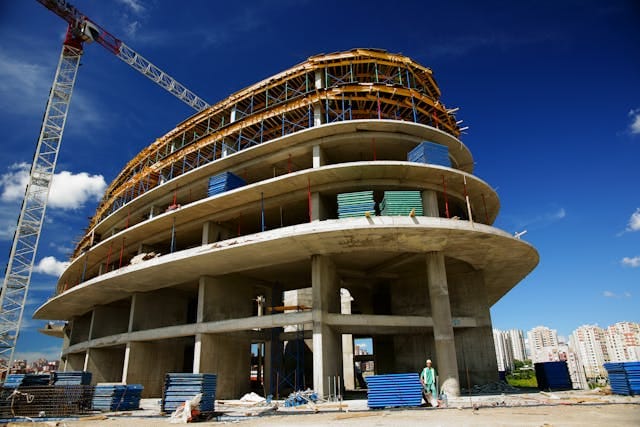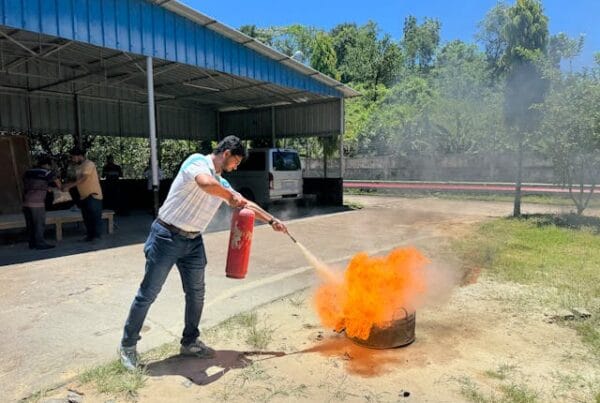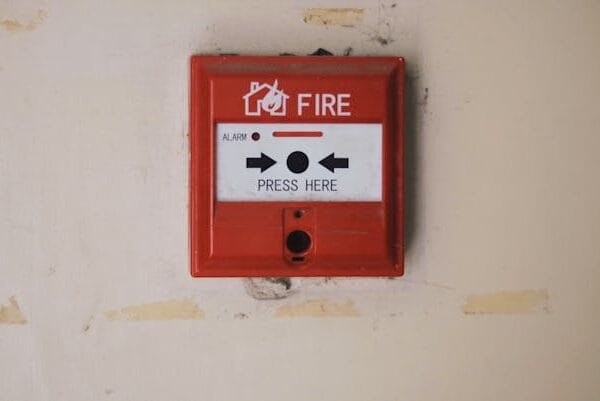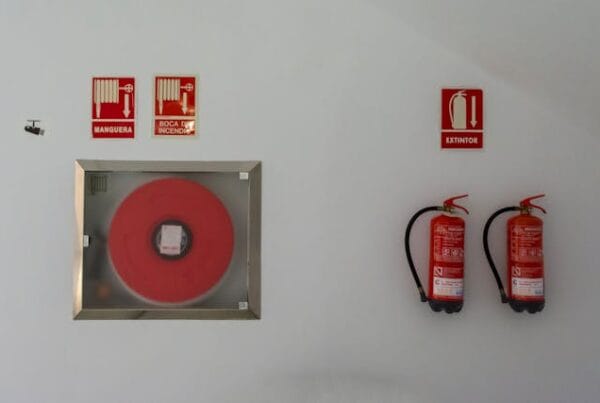When we think of fire safety, we often envision active systems like alarms and sprinklers. However, a building’s first and most fundamental line of defense is built directly into its structure. The use of fire-resistant building materials is the core principle of passive fire protection—a strategy designed to contain a fire within its area of origin, slow its spread, and maintain the building’s structural integrity long enough for occupants to evacuate safely. At Sefirepro, while we are experts in active fire protection systems, we recognize that their effectiveness is magnified when supported by a robust passive protection design. This article explores the crucial role these materials play in a comprehensive life safety system.
Passive fire protection works silently in the background. It doesn’t need to be activated; it is always “on.” Its primary goal is compartmentation: dividing a building into smaller, fire-resistant compartments to prevent the rapid spread of fire and smoke from one area to another.
Understanding Fire Resistance Ratings in Fire-Resistant Building Materials
The effectiveness of fire-resistant building materials is measured by a “fire-resistance rating.” This rating, expressed in hours (e.g., 1-hour, 2-hour), indicates how long a material or assembly (like a wall or floor) can withstand a standard fire test while continuing to perform its function.
A fire-rated assembly must meet three criteria during a test:
- Structural Integrity: It must not collapse under the fire’s heat for the rated period.
- Insulation: It must prevent the temperature on the non-fire side from rising to a point that could ignite materials there.
- Integrity (Containment): It must prevent the passage of flames and hot gases.
These ratings are critical for designing safe buildings, especially for crucial areas like high-rise exit stairwells.
Key Types of Fire-Resistant Building Materials and Assemblies
A passive fire protection strategy relies on a system of components working together. Choosing the right fire-resistant building materials for each application is essential.
1. Concrete and Masonry
Concrete and bricks are inherently non-combustible and have excellent fire-resistant properties. They are commonly used for structural frames, floors, and fire walls that separate different parts of a building or adjacent buildings. Their ability to absorb and dissipate heat makes them a cornerstone of passive protection.
2. Fire-Rated Gypsum Wallboard (Drywall)
Type ‘X’ drywall is one of the most common materials used to create fire-rated walls and ceilings. It contains chemically bound water in its gypsum core. When exposed to fire, this water is slowly released as steam, which absorbs heat energy and slows the temperature rise on the other side of the wall. Multiple layers can be used to achieve higher fire-resistance ratings.
3. Fire Doors
A fire-rated wall is useless if the opening in it is not also protected. Fire doors are rated assemblies that include the door, frame, and hardware. They are designed to close automatically in the event of a fire (often triggered by a fusible link or the building’s fire alarm system). They are essential for protecting evacuation routes like stairwells and corridors.
4. Fire-Rated Glass and Glazing
Modern architecture often uses extensive glass. Special fire-rated glass is available that can maintain its integrity and insulate against heat for a set period, allowing for safe, light-filled designs without compromising compartmentation.
5. Fire Stopping (Penetration Seals)
This is one of the most critical, yet often overlooked, aspects of passive fire protection. Walls and floors are full of penetrations for pipes, wires, and ducts. Each of these openings is a potential pathway for fire and smoke. Fire stopping involves sealing these openings with specialized materials like fire-rated sealants, mortars, and collars that expand when heated (intumescent) to seal the gap. A proper fire stopping program is a key item checked during a professional fire safety audit.
The Synergy Between Passive and Active Fire Protection
The most effective fire safety strategy integrates both passive and active systems. Neither can fully replace the other.
- Passive Protection (Materials): Contains the fire, giving active systems time to work and people time to evacuate. It protects the structure from collapse.
- Active Protection (Alarms/Sprinklers): Detects the fire early and actively works to suppress or extinguish it.
For example, fire-resistant building materials can contain a fire in a single room, allowing the single fire sprinkler in that room to control or extinguish the blaze without it spreading and activating the entire system. This synergy saves lives, minimizes property damage, and is the basis of modern fire safety codes, including the Hampton Fire Safety Standards (SNI).
Conclusion: Building Safety from the Inside Out
While often invisible, fire-resistant building materials are the unsung heroes of fire safety. They provide the fundamental compartmentation and structural resilience that are essential for occupant safety and the effective operation of active fire suppression systems. Ensuring the integrity of your building’s passive fire protection—from its fire walls to the fire stopping around a tiny pipe—is a critical responsibility.
At Sefirepro, we design active systems with a deep appreciation for the passive framework they operate within. We can help you assess the integrity of your building’s fire safety features through our comprehensive audit services. Contact us today to learn how a holistic approach to fire protection can provide the ultimate peace of mind.





